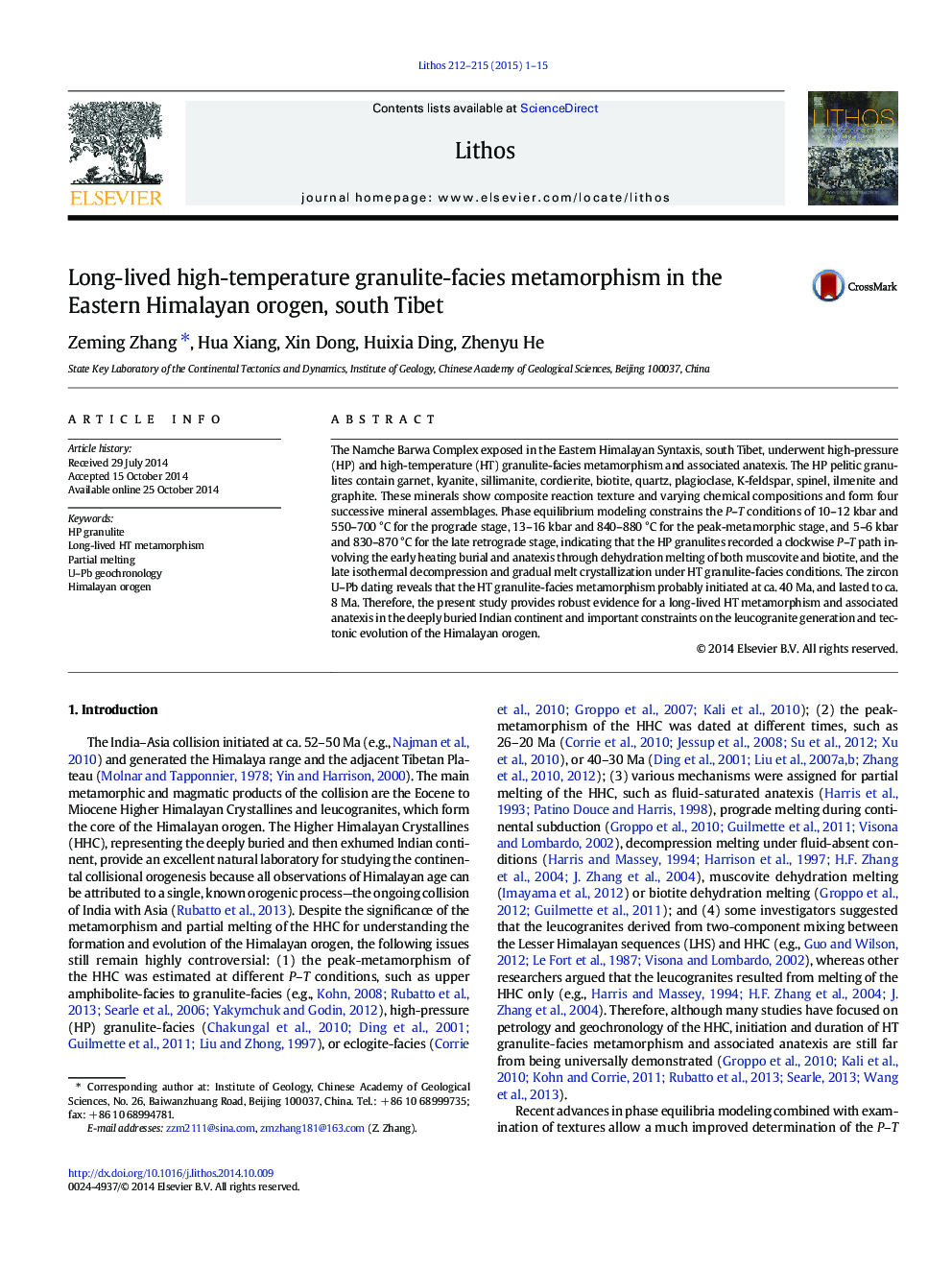| Article ID | Journal | Published Year | Pages | File Type |
|---|---|---|---|---|
| 4715785 | Lithos | 2015 | 15 Pages |
•The HP granulite from the Eastern Himalayan orogen underwent a prolonged HT metamorphism.•The protracted HT metamorphism initiated at ca. 40 Ma and lasted to ca. 8 Ma.•The prolonged HT metamorphism reveals the tectonometamorphic evolution of tectonically thickened crust in large hot orogens.
The Namche Barwa Complex exposed in the Eastern Himalayan Syntaxis, south Tibet, underwent high-pressure (HP) and high-temperature (HT) granulite-facies metamorphism and associated anatexis. The HP pelitic granulites contain garnet, kyanite, sillimanite, cordierite, biotite, quartz, plagioclase, K-feldspar, spinel, ilmenite and graphite. These minerals show composite reaction texture and varying chemical compositions and form four successive mineral assemblages. Phase equilibrium modeling constrains the P–T conditions of 10–12 kbar and 550–700 °C for the prograde stage, 13–16 kbar and 840–880 °C for the peak-metamorphic stage, and 5–6 kbar and 830–870 °C for the late retrograde stage, indicating that the HP granulites recorded a clockwise P–T path involving the early heating burial and anatexis through dehydration melting of both muscovite and biotite, and the late isothermal decompression and gradual melt crystallization under HT granulite-facies conditions. The zircon U–Pb dating reveals that the HT granulite-facies metamorphism probably initiated at ca. 40 Ma, and lasted to ca. 8 Ma. Therefore, the present study provides robust evidence for a long-lived HT metamorphism and associated anatexis in the deeply buried Indian continent and important constraints on the leucogranite generation and tectonic evolution of the Himalayan orogen.
